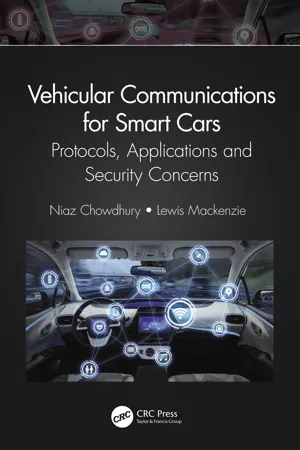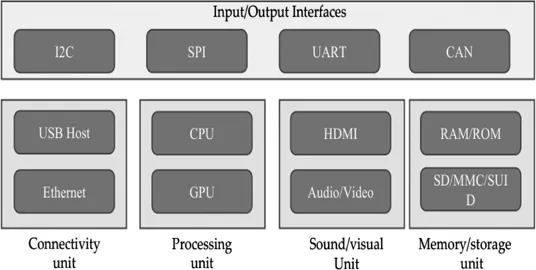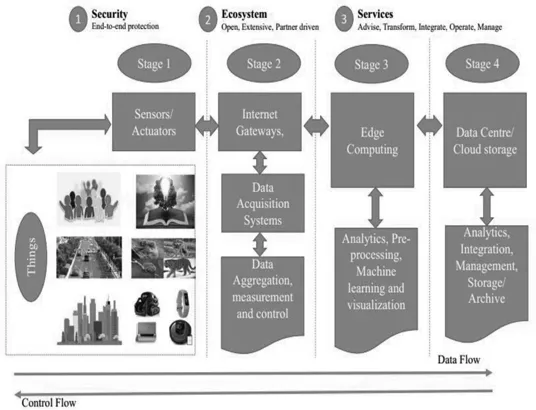
Vehicular Communications for Smart Cars
Protocols, Applications and Security Concerns
- 202 pages
- English
- ePUB (mobile friendly)
- Available on iOS & Android
Vehicular Communications for Smart Cars
Protocols, Applications and Security Concerns
About this book
This book covers a wide range of topics from the smart transportation domain. It discusses protocols, applications and security concerns in various vehicular networks using examples and easy-to-understand figures. The first four chapters focus on vehicular network protocols and applications, while the remaining four chapters incorporate security, trust and privacy issues with examples from real-life cases. The book concludes with a vision of what to expect in the near future and will be an invaluable resource for anybody interested in this nascent technology and its variegated applications.
Dr. Niaz Chowdhury is a postdoctoral research associate at the Knowledge Media Institute, the Open University in England.
Dr. Lewis M. Mackenzie is a senior lecturer in computing science at the University of Glasgow.
Frequently asked questions
- Essential is ideal for learners and professionals who enjoy exploring a wide range of subjects. Access the Essential Library with 800,000+ trusted titles and best-sellers across business, personal growth, and the humanities. Includes unlimited reading time and Standard Read Aloud voice.
- Complete: Perfect for advanced learners and researchers needing full, unrestricted access. Unlock 1.4M+ books across hundreds of subjects, including academic and specialized titles. The Complete Plan also includes advanced features like Premium Read Aloud and Research Assistant.
Please note we cannot support devices running on iOS 13 and Android 7 or earlier. Learn more about using the app.
Information
Chapter 1 A review of Internet of Things (IoT) using visible light optical camera communication in smart cars
- 1.1Introduction
- 1.2Fundamental theory
- 1.2.1History
- 1.2.2Architecture of IoT
- 1.2.3Potential applications of IoT
- 1.2.3.1Healthcare
- 1.2.3.2Smart home
- 1.2.3.3Smart cities
- 1.2.3.4Smart cars
- 1.3IoT deploying VL-OCC in smart cars
- 1.4Future research directions
- 1.4.1Security
- 1.4.2Intelligence
- 1.4.3Power consumption
- 1.5Conclusion
- References
1.1 INTRODUCTION


1.2 FUNDAMENTAL THEORY
1.2.1 History
1.2.2 Architecture of IoT


Table of contents
- Cover Page
- Half Title Page
- Title Page
- Copyright Page
- Contents
- Preface
- Editors
- List of contributors
- 1 A review of Internet of Things (IoT) using visible light optical camera communication in smart cars
- 2 Accident warning and collision avoidance systems
- 3 Behavior analysis of broadcast schemes in vehicular accident warning systems against the two-second driving rule
- 4 The uses of big data in smart city transportation to accelerate the business growth
- 5 A genetic blockchain approach for securing smart vehicles in quantum era
- 6 An overview of the autonomous vehicle system, security, risks, and a way forward
- 7 Statistical in-depth security analysis for vehicle to everything communication over 5G NETWORK
- 8 Security analysis for VANET-based accident warning systems